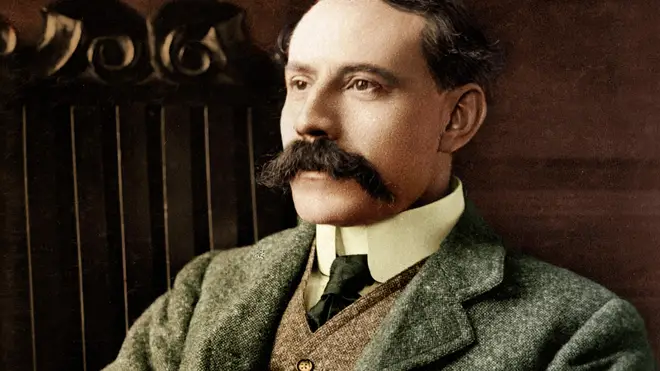On Air Now
Classic FM Breakfast with Dan Walker 6:30am - 9am
7 September 2023, 16:10 | Updated: 18 September 2023, 16:26

Elgar’s famous tune is performed at important events around the world. But what’s its meaning, where are the lyrics from and why did Elgar write it?
There is something quintessentially English about Elgar’s ‘Land Of Hope And Glory’ – which is surprising when you consider that his strongest musical influences were all Austro-German!
The piece has become a fixture of British patriotism: so what is it about this famous tune which makes people want to stand up with their hands on their hearts and weep like a child?
Read more: What are the lyrics to the hymn ‘Jerusalem’ and who composed it?
The song ‘Land of Hope and Glory’ is based on the trio theme from Elgar’s Pomp And Circumstance March No.1, which was originally premiered in 1901. It caught the attention of King Edward VII after it became the only piece in the history of the Proms to receive a double encore.
King Edward suggested that this trio would make a good song, and so Elgar worked it into the last section of his Coronation Ode, to be performed at King Edward’s coronation.
This tune is a moment of calm in the middle of the Pomp and Circumstance March. Heard within the context of the march, this tune is a total oasis, surrounded as it is with the brass and timpani-clad textures of the march’s main themes. Surfacing gently at a piano dynamic, the hymn-like nature of this theme feels simultaneously reassuring and nostalgic.
Read more: Why is Elgar’s Pomp and Circumstance March No.1 the US graduation song?

Vera Lynn - Land Of Hope And Glory
Land of Hope and Glory, Mother of the Free,
How shall we extol thee, who are born of thee?
Wider still and wider shall thy bounds be set;
God, who made thee mighty, make thee mightier yet,
God, who made thee mighty, make thee mightier yet.
The wonderful thing about words is that they can mean different things to different people, and this is certainly the case with A.C. Benson’s 1902 text.
Written before the World War I, it was initially intended to be a celebration of the glory of war and Britain’s power on the international stage. However, over the centuries people have taken strength from the song in different ways.
Discover more music written during wartime >

Land Of Hope & Glory - Heroes - The Coldstream Guards
‘Land of Hope and Glory’ has a stately tempo that makes you want to hold your head up high.
There’s something about a slow-moving tempo which suggests great size and strength. Elgar’s very deliberate use of a slow tempo makes the music seem important and regal, and reinforces a sense of patriotic pride in the mind of the listener.
It also demands to be sung. And when it comes to singing your heart out, nothing beats a good hymn tune – and Elgar really knew how to write ’em!
The melody rises gradually throughout the whole verse, reaching a triumphant climax in the final line. This ultra-long phrase increases the anticipation and tension and makes the final pay-off even more satisfying.
Even though it was originally part of an orchestral work, you can clearly hear Elgar’s choral influence shining through in the melody. No wonder the King begged Elgar to set some words to it so that he could sing along!
‘Land of Hope and Glory’ is performed at all the occasions we hold dear, from England rugby matches to the commonwealth games. American college students even graduate to it!
There’s now such a rich cultural memory of pride and patriotism associated with the song that even the most stony-hearted citizen of the world is bound to get something in their eye.
Find out more about Elgar's music here